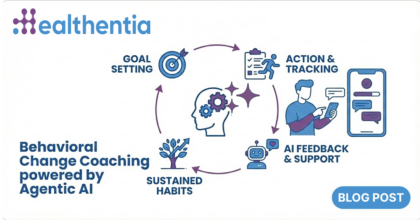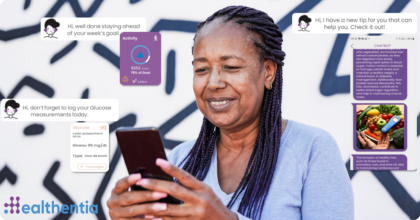
A digital therapy pathway is a healthcare method that employs technology to provide support and therapy services to patients remotely. These technologies can include wearables and a mobile app for collecting data, an online platform for visualization purposes, video conferencing and chatting for direct communication between clinicians and patients, and a virtual companion service that can support the patient by giving personalized advice [2].
Typically, the process of digital therapy includes many steps [3]. These can include:
- A first assessment of each patient to determine the best therapy approach
- Set of clear goals that are specific, measurable, and achievable defined by healthcare professionals
- Progress monitoring with the use of questionnaires and other digital tools allows healthcare professionals to keep track of the effectiveness of the treatment and adjust it as required
For the last step, a digital evaluation method of the data collected can be implemented where the predefined goals are transformed into critical rules for the health progression. This performance assessment can automatically alert the patient through the mobile app when a measurable attribute is out of range or provide guidance, feedback, and support as patients work towards achieving their goals. This will be achieved with the use of a virtual companion service, that will trigger a dialogue on a regular basis in order to give advice in a personalized manner to ensure progress towards the goals.
To conclude, digital therapy pathways can be an effective way to deliver therapy services to patients who need continuous monitoring and have difficulty accessing traditional in-person therapy, such as those who have mobility issues and also it can thrive in areas where demand for traditional treatment outgrows its capacity [3].
Up to this point, digital therapy is mostly used to supply psychotherapy [4] and Healthentia can be used to provide such services as it incorporates all the aforementioned tools, aspiring to effectively support also other diseases than mental health conditions. Healthentia can provide feedback and in combination with a virtual coaching service, orchestrated by a predefined digital clinical pathway, it can create a personalized approach to improve someone’s health. However, it is important to always take into account patients’ mental health needs, as in some cases in-person therapy may be required.
References
[1] “Global Digital Therapeutics Market Report 2022: Analysis & Forecasts 2020-2026 – Market to Reach $12.1 Billion by 2026” (accessed May 15, 2023).
[2] C. Moore, “What Is Digital Therapy and How Does It Really Work?”, Quenza, Aug. 13, 2021. (accessed May 15, 2023).
[3] “Digital Therapeutics: How Software Can Treat Diseases” AltexSoft. (accessed May 15, 2023).
[4] A. Nwosu, S. Boardman, M. M. Husain, and P. M. Doraiswamy, “Digital therapeutics for mental health: Is attrition the Achilles heel?”, Frontiers in Psychiatry, vol. 13, 2022, Accessed: May 15, 2023. [Online].









